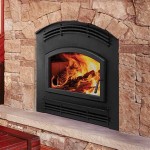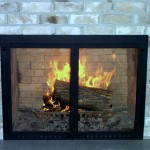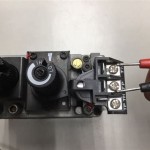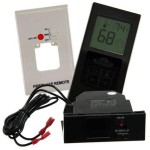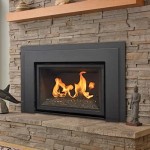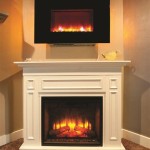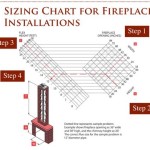Fireplace Insert Ideas: Transforming Your Hearth
Fireplace inserts represent a compelling option for homeowners seeking to enhance the efficiency and aesthetics of their existing masonry fireplaces. Unlike traditional open fireplaces, which are notoriously inefficient, fireplace inserts are designed as closed combustion systems, significantly reducing heat loss up the chimney and delivering a more consistent and controllable heat output. They offer a range of fuel options, stylistic designs, and technological features to suit diverse heating needs and aesthetic preferences. This article explores a variety of fireplace insert ideas, encompassing fuel types, styles, and considerations for optimal performance and installation.
Fuel Type Considerations: Choosing the Right Fireplace Insert
The choice of fuel is paramount when selecting a fireplace insert, as it directly impacts heating efficiency, maintenance requirements, and ongoing fuel costs. The most common fuel types for fireplace inserts include wood, gas (natural gas or propane), and electricity. Each offers distinct advantages and disadvantages that should be carefully evaluated based on individual needs and priorities.
Wood-Burning Inserts: Wood-burning inserts provide a traditional aesthetic and a robust heat output. Modern wood-burning inserts are designed to burn wood more efficiently and cleanly than older models, often incorporating catalytic or non-catalytic combustion systems to reduce emissions and maximize heat extraction from the wood. These systems ensure a more complete burn of the wood, minimizing creosote buildup in the chimney and improving overall heating performance. The heat is often circulated throughout the room using a blower fan, enhancing heat distribution.
However, wood-burning inserts require a consistent supply of seasoned firewood, which can be labor-intensive to source, store, and handle. Regular chimney cleaning and maintenance are also essential to prevent creosote buildup, which can pose a fire hazard. Furthermore, wood-burning inserts typically require more manual operation, including loading wood, adjusting air controls, and removing ashes.
Gas Inserts: Gas inserts offer a convenient and relatively low-maintenance heating solution. They are available in both natural gas and propane options, allowing flexibility based on available fuel sources. Gas inserts can be easily ignited with the push of a button or a remote control, and many models feature thermostatic controls for precise temperature regulation. The flame appearance can be quite realistic, mimicking the look of a traditional wood-burning fire with ceramic logs or contemporary media options like glass beads or stones.
The primary advantages of gas inserts include ease of use, consistent heat output, and reduced maintenance compared to wood-burning inserts. Gas inserts also eliminate the need for wood storage and handling. However, they rely on a continuous supply of gas, which may be subject to price fluctuations. Installation typically requires professional gas line connection, and a power outage will render the insert inoperable unless it is equipped with a battery backup system.
Electric Inserts: Electric fireplace inserts are the most convenient and versatile option, offering ease of installation and operation. They require no venting or chimney, allowing for flexible placement within a room. Electric inserts generate heat through electric resistance, and the flame effect is created using LED lighting and reflective surfaces. Some electric inserts offer realistic flame patterns and adjustable flame brightness, while others prioritize a more modern and minimalist aesthetic.
Electric inserts are ideal for supplemental heating and are particularly suitable for apartments, condos, or homes where installing a traditional fireplace or vent is not feasible. They are also relatively inexpensive to purchase and operate, and they require minimal maintenance. However, electric inserts typically provide less heat output than wood or gas inserts, and they consume electricity, which can increase utility bills.
Aesthetic Styles: Complementing Your Home Décor
Fireplace inserts are available in a wide array of styles, ranging from traditional and rustic to contemporary and minimalist. The chosen style should complement the overall décor of the room and reflect personal preferences. Consider the architectural style of the home and the existing furnishings when selecting a fireplace insert.
Traditional Styles: Traditional fireplace inserts often feature ornate detailing, such as raised panels, decorative moldings, and cast iron surrounds. These inserts are designed to evoke the look of a classic wood-burning fireplace, and they are typically available in a range of finishes, including black, brass, and antique bronze. Traditional inserts often incorporate realistic log sets and glowing embers to enhance the authenticity of the flame.
Contemporary Styles: Contemporary fireplace inserts are characterized by clean lines, minimalist designs, and modern materials. These inserts often feature rectangular or square shapes, and they may incorporate elements such as stainless steel, black glass, or stone. Contemporary inserts often use glass beads or stones instead of traditional logs, creating a more sleek and sophisticated aesthetic. They are also often equipped with advanced technology, such as remote controls and programmable thermostats.
Rustic Styles: Rustic fireplace inserts are designed to create a warm and inviting atmosphere, often incorporating natural materials such as stone, brick, or wood. These inserts may feature distressed finishes, exposed hardware, and rugged textures. Rustic inserts are ideal for homes with a farmhouse, cabin, or lodge-style décor. They often incorporate features such as oversized mantels and hearths to enhance the rustic aesthetic.
Transitional Styles: Transitional fireplace inserts blend elements of traditional and contemporary design, creating a balanced and versatile look. These inserts often feature clean lines and simple shapes, but they may also incorporate subtle decorative details. Transitional inserts are available in a wide range of finishes and materials, making them suitable for a variety of home décor styles.
Installation Considerations: Ensuring Safe and Efficient Operation
Proper installation is crucial for the safe and efficient operation of a fireplace insert. It is essential to consult with a qualified installer to ensure that the insert is properly sized for the fireplace opening and that all necessary venting and gas line connections are made correctly. Failure to install the insert properly can result in inadequate heating, carbon monoxide leaks, or even a fire hazard.
Sizing and Clearance: The fireplace insert must be properly sized for the existing fireplace opening. The dimensions of the insert should be slightly smaller than the fireplace opening to allow for proper airflow and ventilation. Adequate clearance must also be maintained around the insert to prevent overheating and ensure safe operation. Consult the manufacturer's specifications for recommended clearances.
Venting Requirements: The venting requirements for a fireplace insert vary depending on the fuel type. Wood-burning inserts typically require a stainless steel liner to be installed within the existing chimney to prevent creosote buildup and ensure proper drafting. Gas inserts may require a flexible vent liner or a direct vent system, depending on the model and local building codes. Electric inserts do not require any venting.
Gas Line Connections: Gas inserts require a professional gas line connection to ensure a safe and leak-free operation. A qualified gas technician should inspect the existing gas line to ensure that it is properly sized and in good condition. A gas shutoff valve should also be installed near the insert for emergency shutoff.
Electrical Connections: Electric inserts require a dedicated electrical circuit to prevent overloading. The electrical circuit should be properly grounded and protected by a circuit breaker. It is essential to follow all electrical codes and regulations when installing an electric insert.
Permits and Inspections: In many jurisdictions, a building permit is required for the installation of a fireplace insert. It is essential to check with the local building department to determine the permit requirements in your area. An inspection may also be required after the installation to ensure that the insert meets all safety codes and regulations.
Choosing the right fireplace insert involves considering fuel type, aesthetic style, and installation requirements. Carefully evaluating these factors will ensure a safe, efficient, and visually appealing addition to the home.

Transform Your Fireplace With This Temporary Insert The Pickled Rose

7 Fireplace Surround Ideas That Will Ignite The Room

10 Decorative Options For A Fake Fireplace Insert Grace In My Space

10 Fireplace Makeover Ideas Before And After Regency

40 Best Fireplace Décor Ideas Mantel
6 Electric Fireplace Diys You Ll Want To Recreate Asap Heat Glo

40 Best Fireplace Décor Ideas Mantel

Indoor Living And Fireplace Design Ideas Outdoor Advice Greatrooms

40 Fabulous Fireplace Design Ideas For Any Budget Or Style

5 Fireplace Design Ideas That Will Enhance Your Home

